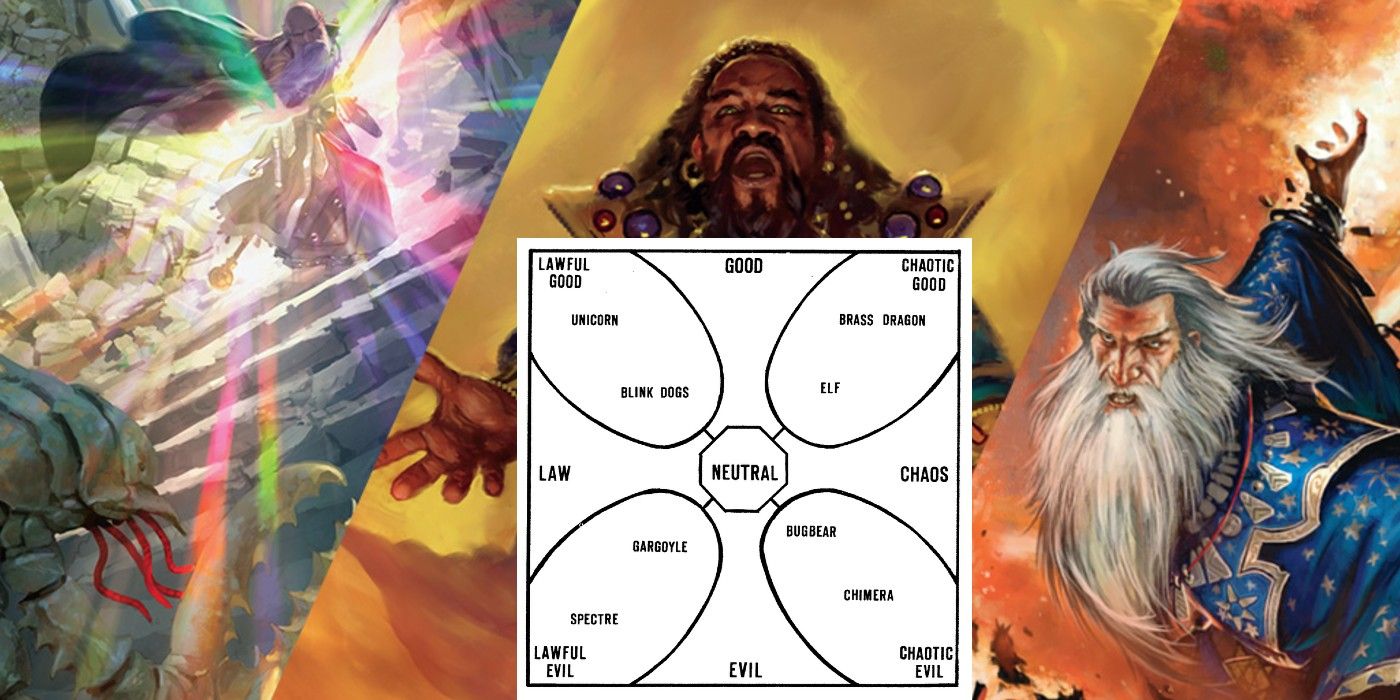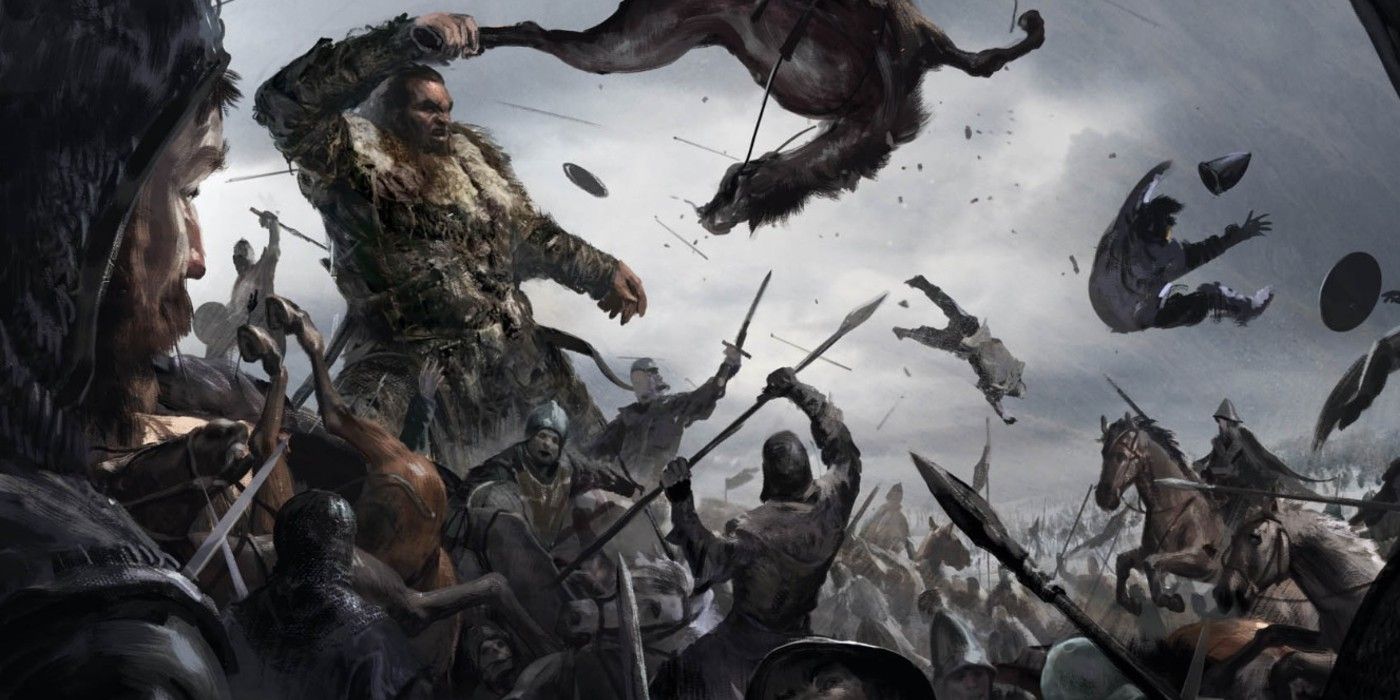
The concept of alignment has been a part of character creation in Dungeons & Dragons since some of the earliest editions of the game, but this system of moral and philosophical outlook is one that Dungeon Masters should routinely apply to their Non-Player Characters as well. By giving NPCs as much depth in their outlooks as Player Characters, DMs can add to the immersion of a campaign with a more developed supporting cast of characters. This can also allow for more dynamic stories, as former allies might become enemies, and initial antagonists might later have common ground with the heroes. An alignment-focused playstyle encourages DMs to challenge the characters’ philosophical drives and ethical convictions as much as their heroism, leading to more complex and meaningful storytelling, when applied correctly.
Early D&D owes much to the influence of popular fantasy authors from its time of inception. Beyond the obvious inspiration of Tolkien, D&D’s magic system borrows ideas from the works of Jack Vance, and its concept of alignment draws heavily from stories by Michael Moorcock. Prior to Advanced Dungeons & Dragons, D&D featured the alignment choices of lawful, neutral, and chaotic. This mirrored Moorcock’s fantasy novels, which featured a reoccurring theme across series like Elric, Hawkmoon, and The Eternal Champion, of an ongoing war between the forces of law and chaos, with balance as the ideal middle ground. Later editions of D&D codified the nine alignments known today, with combinations of ethical good, evil, and neutrality, along with the philosophical axis of law and chaos.
Today, the alignment chart is an aspect of popular culture that stretches beyond tabletop RPGs, with D&D alignment routinely applied to characters in popular fiction. Just as alignment is a useful tool in helping players roleplay morally and philosophically consistent characters, DMs who note the alignment of NPCs will benefit from a richer campaign experience. For players, acting according to alignment can sometimes mean clashing with other player characters, as lawful good paladin archetypes are known to disagree with chaotic rogue personalities who bend the rules to achieve their goals, among other examples. A DM who designs their NPCs as people, with their own motivations and outlooks, instead of simple distinctions of ally, enemy, and neutral party, can produce a deeper story with strong thematic elements.

Beginning a campaign with a well-prepared antagonist is a good start to a D&D game, but over the course of the story, having alignments for NPCs allows their roles to change based on events. Final Fantasy 7 initially pits the chaotic good leaning group, Avalanche, against the lawful evil Shinra corporation. The introduction of a more pressing existential threat from the chaotic evil Sephiroth turns former enemies into allies, as they unite against a common foe.
D&D games can have similar shifts emerge organically when NPCs are assigned alignments. The heroes might initially receive aid from lawful neutral authority figures if they are battling evils that threaten the stability of a region. However, if the players become champions of liberty, challenging the status quo, they could be seen as agents of chaos, and find their allies turning against them. A chaotic neutral band of warriors the party clashes with early in the game could later become allies if a dictatorial force emerges that threatens their freedom.
While alliances between good and evil often seem improbable, by emphasizing the philosophical element of law and chaos with NPCs where those characters stand regarding freedom and control can make such partnerships make sense. At its best, law can equate with order and stability, while at worst it can stand for stasis or tyranny. Chaos can be destructive and entropic, or it can represent opportunity, growth, and creativity. If a DM gives the supporting cast alignments, and portrays them adequately, the players will have a good understanding of where NPCs' priorities lie. A neutral evil or chaotic evil cult that is spreading a plague of undeath in a D&D game could be a threat to all manner of lawful characters, as well as all good-aligned characters.
Unlike some other modern tabletop RPGs, D&D has far more rules for combat than for philosophical debate and social conflict. DMs should take every opportunity to have NPCs question not just what the PC party is doing, but why they take the actions they do. By bringing moral and philosophical drives into question, DMs can encourage players to have a better understanding of their own character’s motivation, and in the process reveal the alignments of various NPC characters in D&D through their actions and dialogue. Running a game of this nature requires a bit more preparation and bookkeeping on the part of the DM, but more importantly, it also requires flexibility. While the DM might plan for certain avenues, an alignment-oriented campaign may offer unexpected turns, as the party might find common ground with an intended foe or start a conflict with a planned ally.

While not every NPC requires statistics, DMs should consider the alignment of all important characters in the campaign. A character such as a patron noble, a local lord, or a knowledgeable sage, might not require combat statistics, but their alignment might determine whether they want to provide aid to the party in a specific situation. By emphasizing the dichotomy of law and chaos as much as good and evil, conflicts can be much more complex than light against darkness.
A Dungeons & Dragons game where NPC alignment is stressed can emulate the shifting alliances of A Song Of Ice And Fire, instead of the more clear-cut battles of good against evil featured in The Lord Of The Rings. Circumstances will obviously come into play, since regardless of alignment, nearly any character could potentially become an ally in the face of a truly catastrophic threat. By encouraging players to act according to their alignment, and featuring NPCs doing the same, a Dungeon Master can put the alignment chart to good use as something that broadens the potential for depth and unpredictability in a game, as opposed to a simple notation on a character sheet that is soon forgotten.
from ScreenRant - Feed https://ift.tt/3pfnEK2
https://ift.tt/3g7ECG1
Comments
Post a Comment